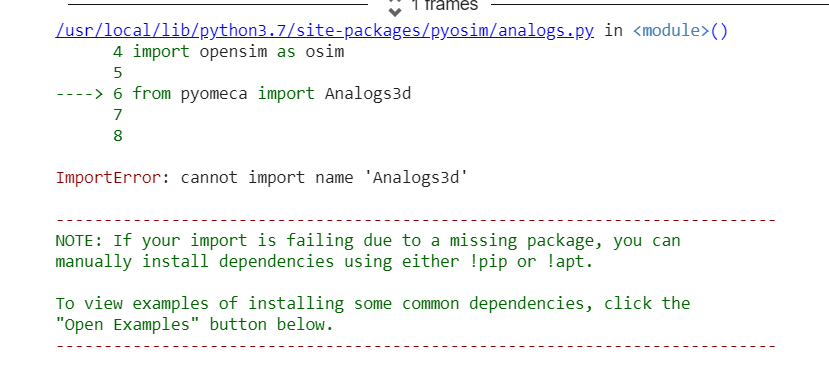Pyomeca is a python library allowing you to carry out a complete biomechanical analysis; in a simple, logical and concise way.
See Pyomeca's documentation site.
Pyomeca implements specialized functionalities commonly used in biomechanics.
As an example, let's process the electromyographic data contained in this c3d file.
You can follow along without installing anything by using our binder server:
from pyomeca import Analogs
data_path = "../tests/data/markers_analogs.c3d"
muscles = [
"Delt_ant",
"Delt_med",
"Delt_post",
"Supra",
"Infra",
"Subscap",
]
emg = Analogs.from_c3d(data_path, suffix_delimiter=".", usecols=muscles)
emg.plot(x="time", col="channel", col_wrap=3)emg_processed = (
emg.meca.band_pass(order=2, cutoff=[10, 425])
.meca.center()
.meca.abs()
.meca.low_pass(order=4, cutoff=5, freq=emg.rate)
.meca.normalize()
)
emg_processed.plot(x="time", col="channel", col_wrap=3)import matplotlib.pyplot as plt
fig, axes = plt.subplots(ncols=2, figsize=(10, 4))
emg_processed.mean("channel").plot(ax=axes[0])
axes[0].set_title("Mean EMG activation")
emg_processed.plot.hist(ax=axes[1], bins=50)
axes[1].set_title("EMG activation distribution")See the documentation for more details and examples.
- Signal processing routine commonly used in biomechanics such as filters, normalization, onset detection, outliers detection, derivatives, etc.
- Common matrix manipulation routines implemented such as getting Euler angles to/from a rototranslation matrix, creating a system of axes, setting a rotation or translation, transpose or inverse, etc.
- Easy reading and writing interface to common files in biomechanics (
c3d,csv,xlsx,mat,trc,sto,mot) - All of xarray's awesome features
The following illustration shows all of pyomeca's public API. An interactive version is available in the documentation.
Pyomeca itself is a pure Python package, but its dependencies are not. The easiest way to get everything installed is to use conda.
To install pyomeca with its recommended dependencies using the conda command line tool:
conda install -c conda-forge pyomecaNow that you have installed pyomeca, you should be able to import it:
import pyomecaPyomeca is designed to work well with other libraries that we have developed:
- pyosim: interface between OpenSim and pyomeca to perform batch musculoskeletal analyses
- ezc3d: Easy to use C3D reader/writer in C++, Python and Matlab
- biorbd: C++ interface and add-ons to the Rigid Body Dynamics Library, with Python and Matlab binders.
Pyomeca is Apache-licensed and the source code is available on GitHub. If any questions or issues come up as you use pyomeca, please get in touch via GitHub issues. We welcome any input, feedback, bug reports, and contributions.
If you use pyomeca in your academic work, please consider citing our paper as:
@article{Martinez2020,
doi = {10.21105/joss.02431},
url = {https://doi.org/10.21105/joss.02431},
year = {2020},
publisher = {The Open Journal},
volume = {5},
number = {53},
pages = {2431},
author = {Romain Martinez and Benjamin Michaud and Mickael Begon},
title = {`pyomeca`: An Open-Source Framework for Biomechanical Analysis},
journal = {Journal of Open Source Software}
}Please consider citing the xarray project, which pyomeca is based on:
@article{jors-xarray,
title = {Xarray: N-D labeled arrays and datasets in Python},
author = {Joe Hamman and Stephan Hoyer},
year = {2017},
journal = {Journal of Open Research Software}
}Pyomeca is an open-source project created and supported by the S2M lab.








